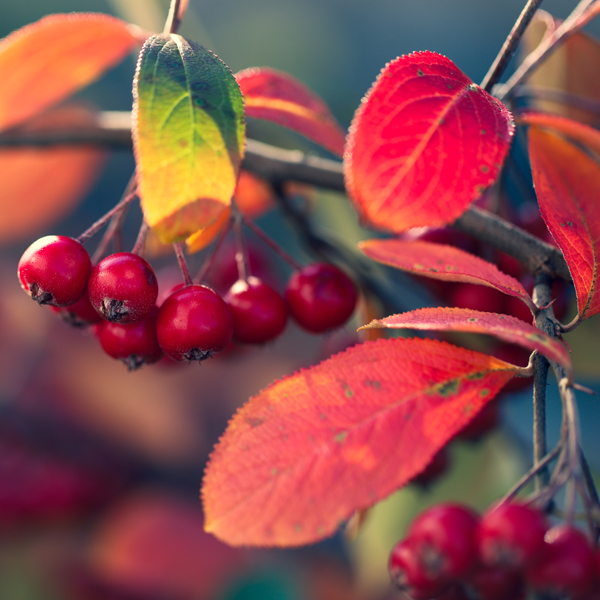
By Hilary Kassler
One of the greatest pleasure of living in the Northeast is watching the trees come into their brilliant fall hues, a spectrum of outrageous color – bright gold, orange, crimson, purple and everything in between. Why should trees should get all the credit for autumn’s dazzling show? There are many shrubs that provide spectacular displays of color in the fall, sometimes with the added bonus of jewel colored berries that are not only attractive in appearance but also attract birds. Whether you are planning your landscaping or choosing new shrubs to add to your established landscape, consider including shrubs that provide plenty of fall drama.
Oakleaf Hydrangea (Hydrangea quercifolia): A deciduous shrub with oak-like foliage that produces pyramidal panicles of white flowers in summer that turn pinkish as they age. Foliage changes from green to deep reds in the fall.
Virginia Sweetspire (Itea virginica): Dense,deciduous shrub that features racemes of fragrant white flowers in early summer. Oval, dark green leaves turn varying shades of red, orange and gold in autumn. Long period of fall color, with leaves often persisting on the plants until early winter.
Viburnum: Most deciduous viburnums have great fall color. Consider Viburnum nudum ‘Winterthur’ or Viburnum nudum ‘Brandywine.’ Both of these produce flat clusters of fragrant, creamy white flowers, followed by white fruit that darkens to pink before maturing to blue. Shiny deep green foliage turns wine red in the fall. The jewel tone berries add further interest, often persisting into winter.
Black Chokeberry (Aronia melanocarpa): Small to medium sized shrub, native to North America with small clusters of white flowers in spring that are followed by glossy black berries. In autumn, leaves change from green to vibrant tones of red, orange and purple.
Red Chokeberry (Aronia arbutifolia): The cultivar ‘Brilliantissima’ is a compact slow growing shrub, noted for its clusters of lovely white flowers in spring and then attractive and abundant glossy red berries and brilliant red fall foliage.
Dwarf Fothergilla (Fothergilla gardenia): Compact, ornamental shrub that features fragrant, creamy white, fuzzy, bottlebrush flowers, followed by dark green foliage in summer. Fall foliage displays dramatic shades of yellow, orange and red.
Redvein Enkianthus (Enkianthus campanulatus): Upright shrub, native to Japan, features clusters of lightly-scented, dainty creamy yellow bell-shaped flowers with red veins in spring. Green foliage becomes brilliant yellow, orange and red in fall.
Sumac (Rhus aromatica and Rhus typhina): Rhus aromatica ‘Gro-Low’ is fast-growing groundcover with glossy, green foliage, turning a magnificent red in fall. It is fragrant when brushed against or leaves are crushed. A relatively new cultivar of Rhus typhina, ‘Tiger Eyes’ grows into an upright, rounded form about 6 feet tall and wide. New growth emerges chartreuse in spring, maturing to yellow and the developing stunning orange and scarlet tones in fall.
Witch Hazel (Hamamelis x intermedia ‘Arnold Promise’): This popular variety of Witch Hazel is a large deciduous shrub with broad green leaves that warm up to shades of yellow and red in the fall. As an added bonus, this shrub produces unusual fragrant ribbony yellow flowers with red cups on bare branches in late winter to very early spring.
Burning Bush (Euonymus alatus): Although popular in the past for its blazing red fall foliage, Massachusetts and several other northeastern states have now deemed Euonymus alatus and its cultivars “invasive” and prohibit selling and planting the species.
https://www.westonnurseries.com/burningbush/







